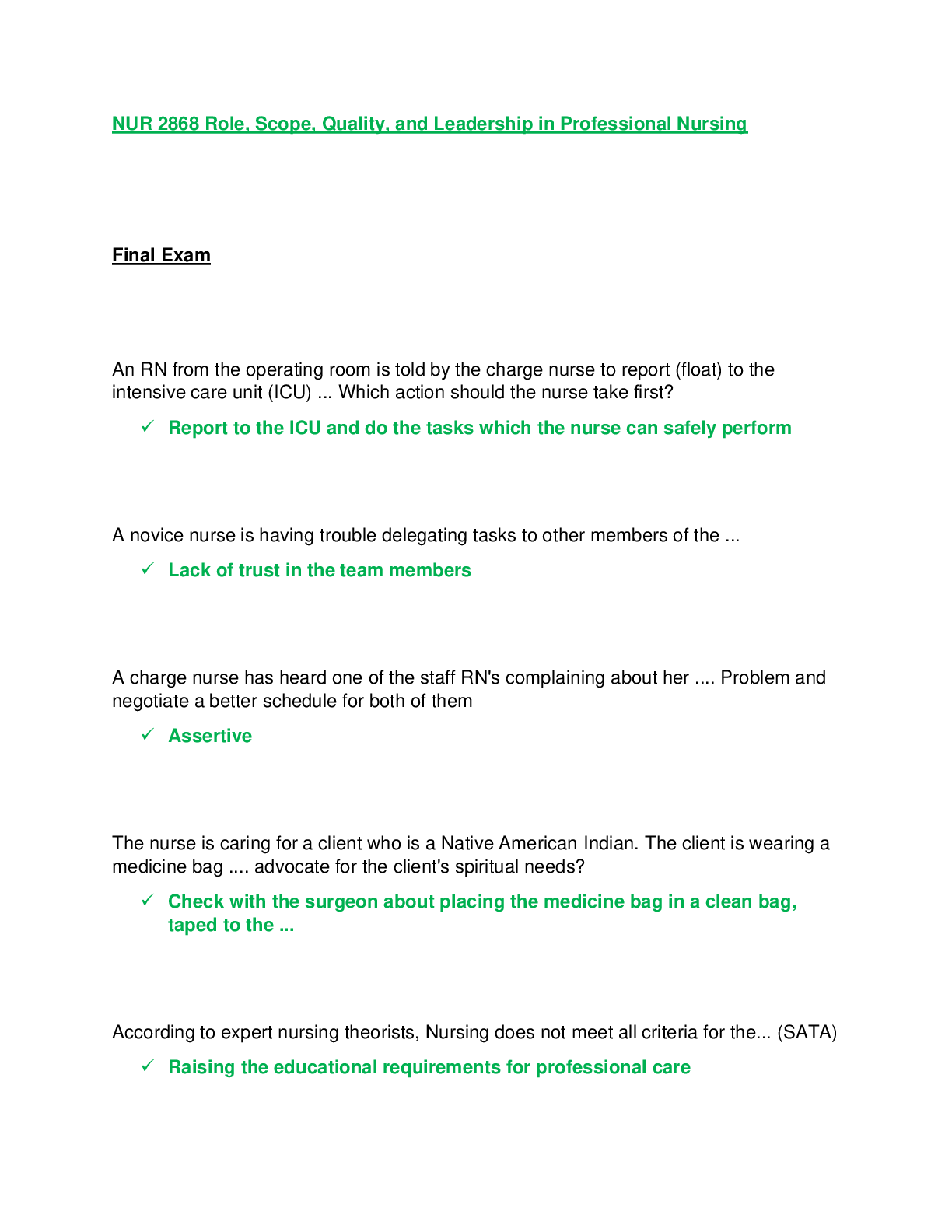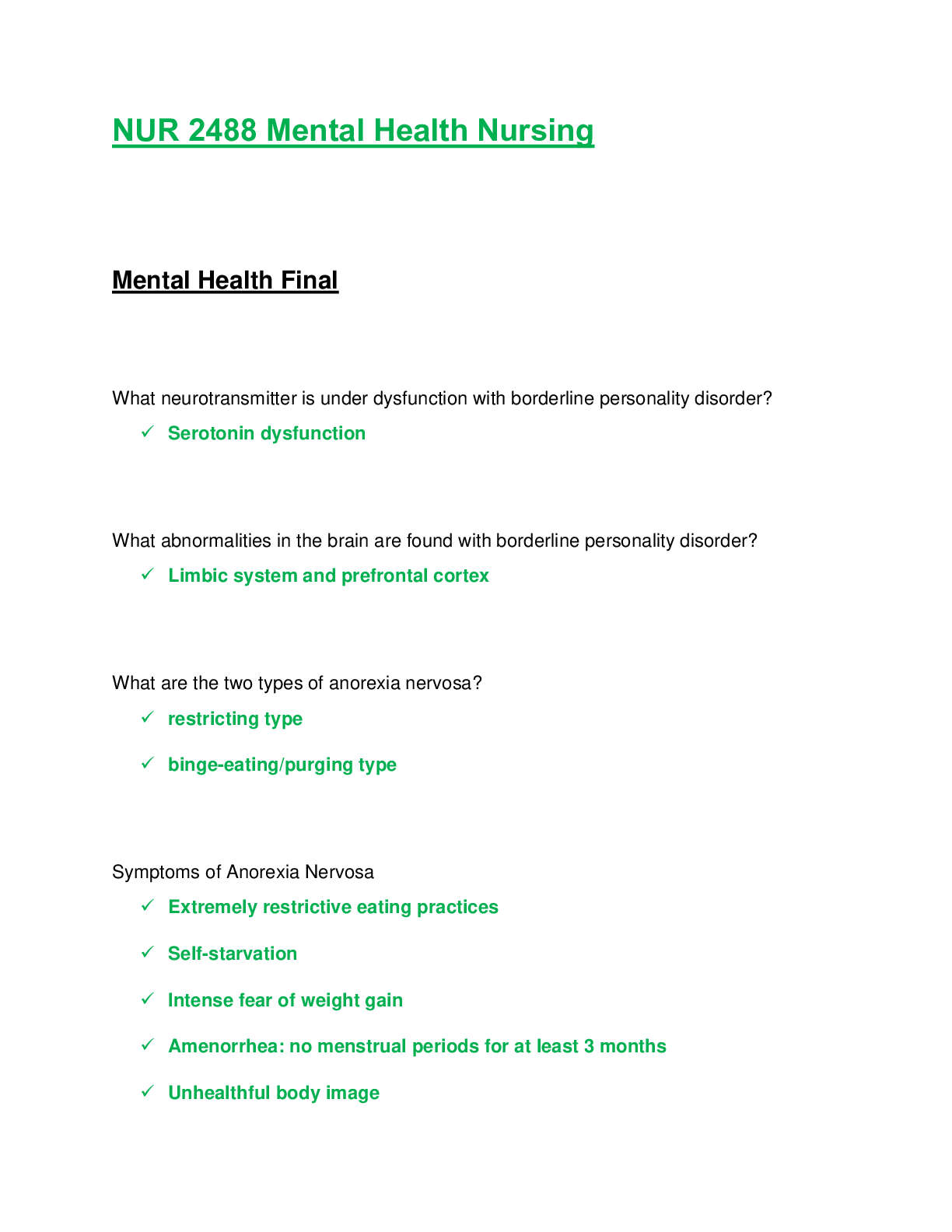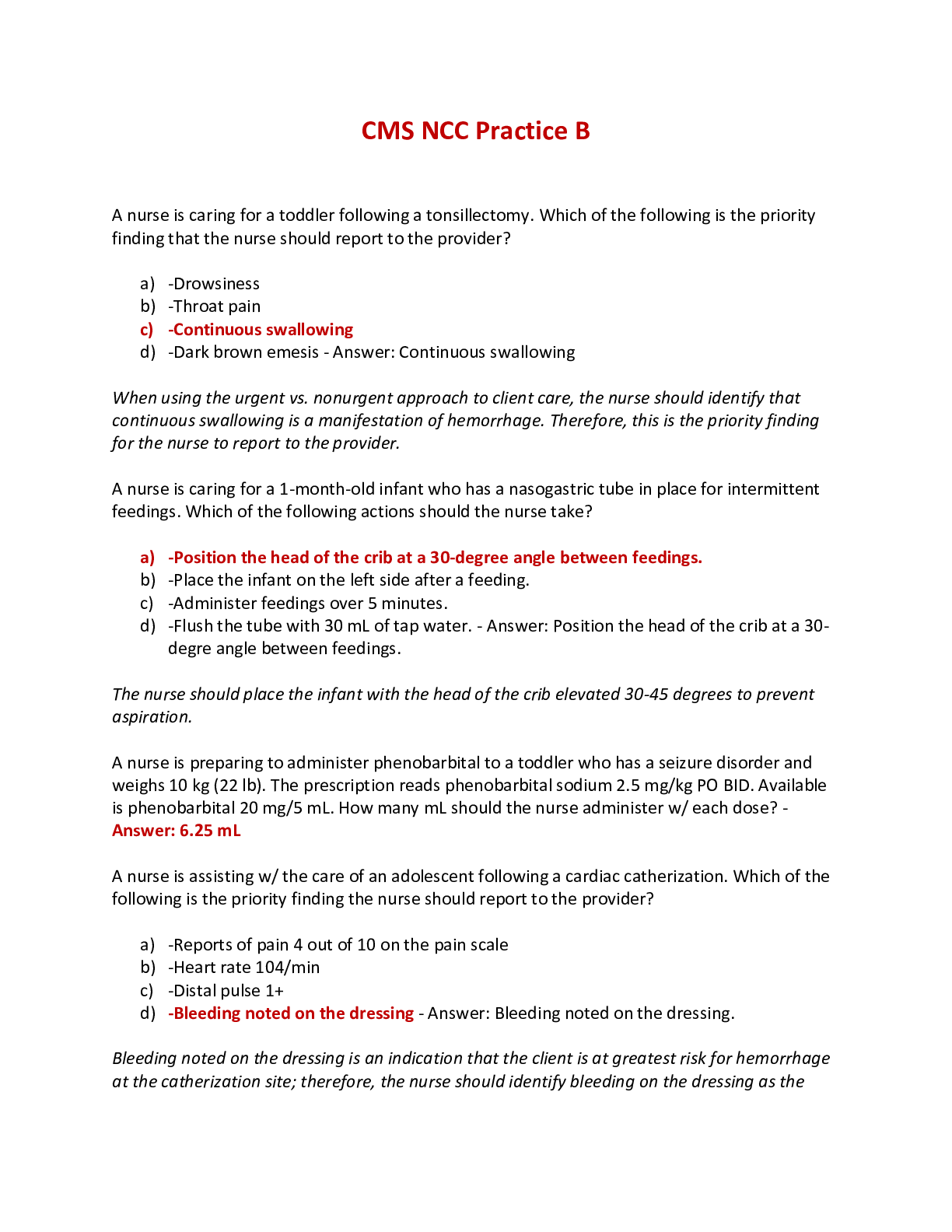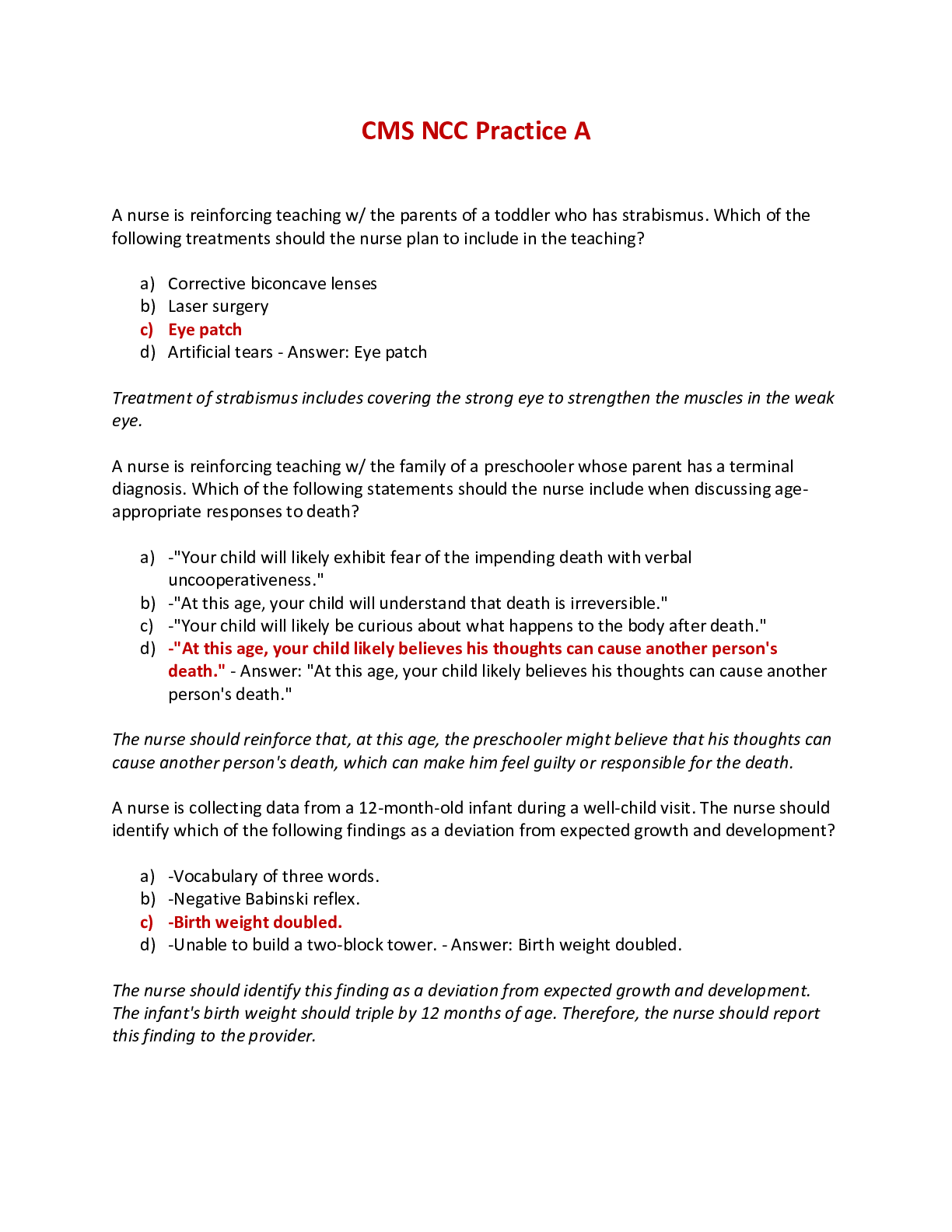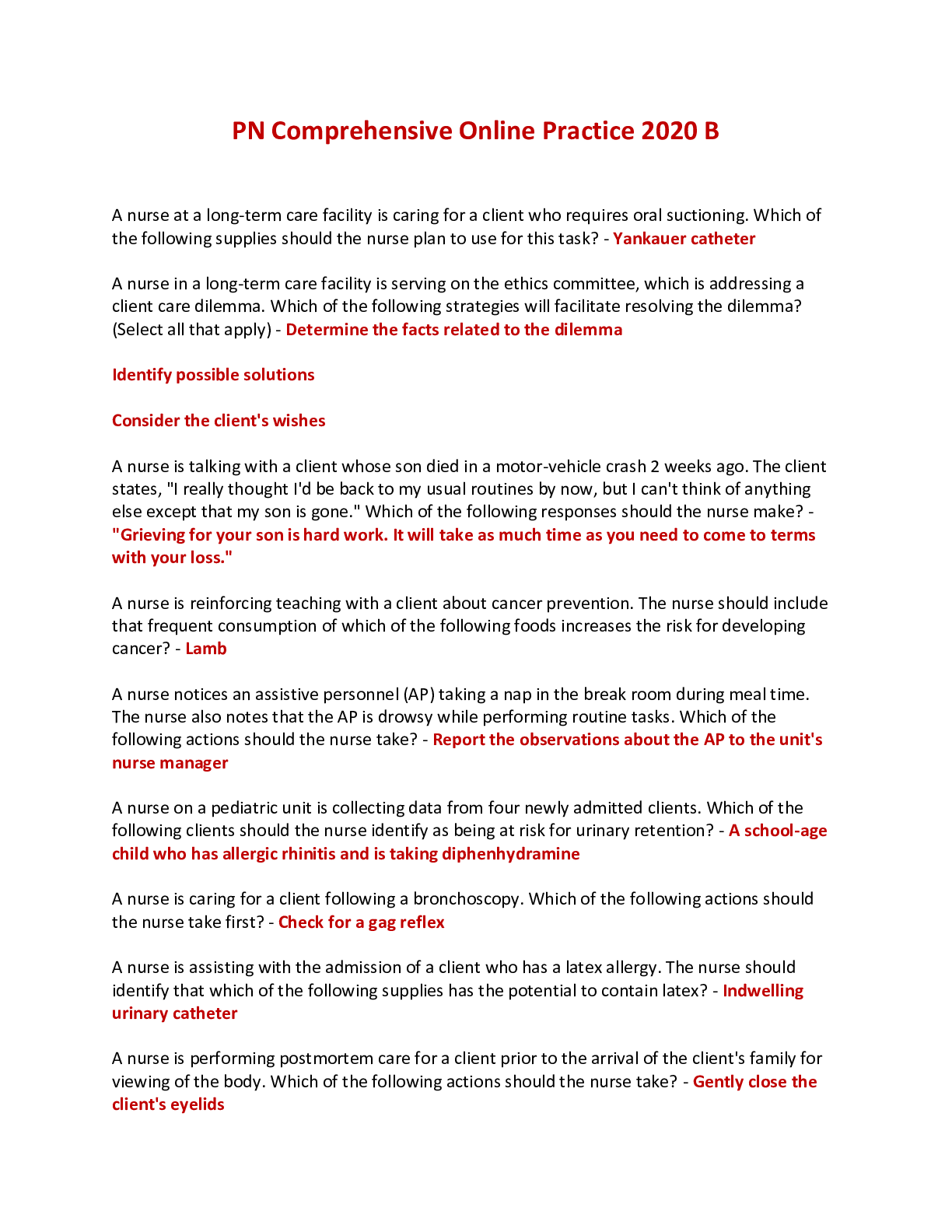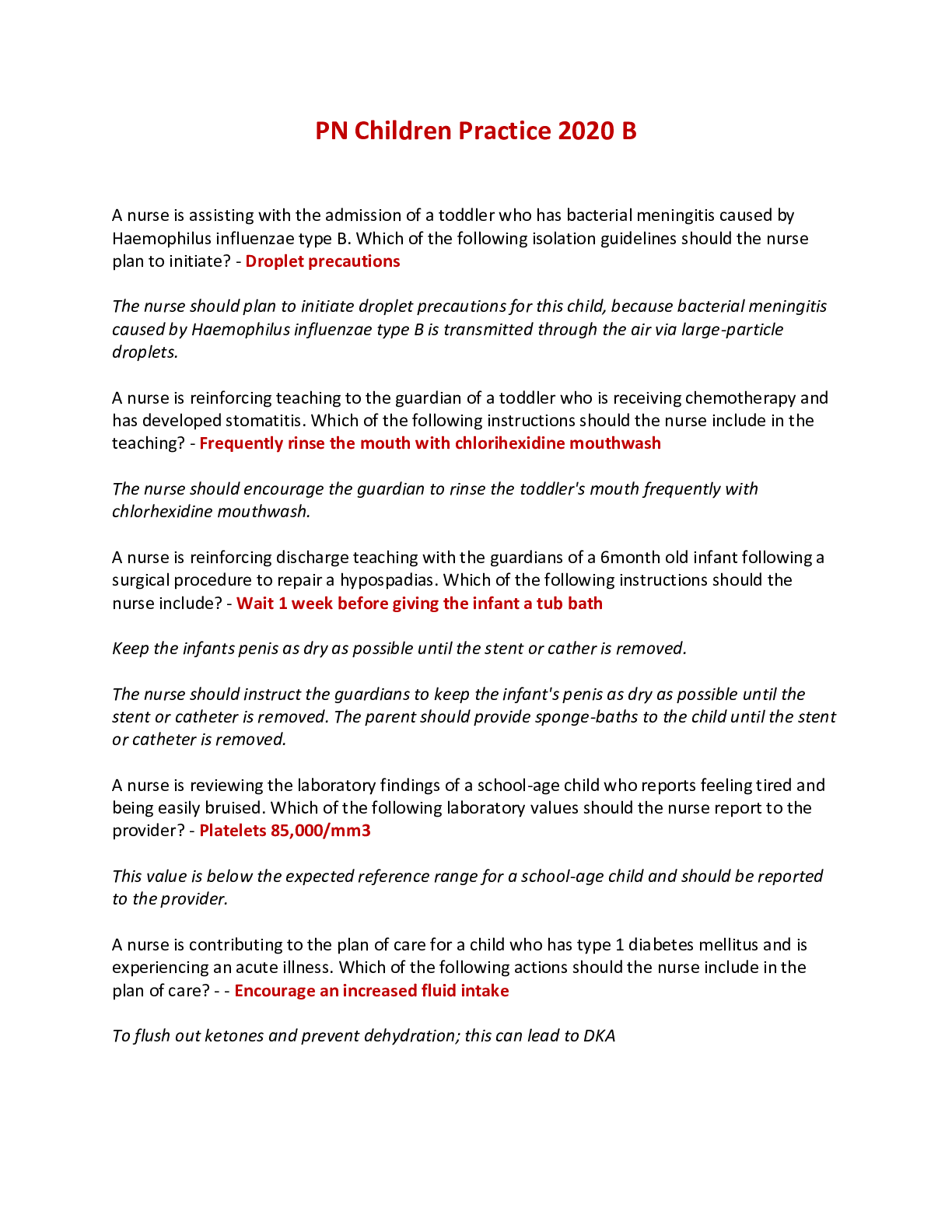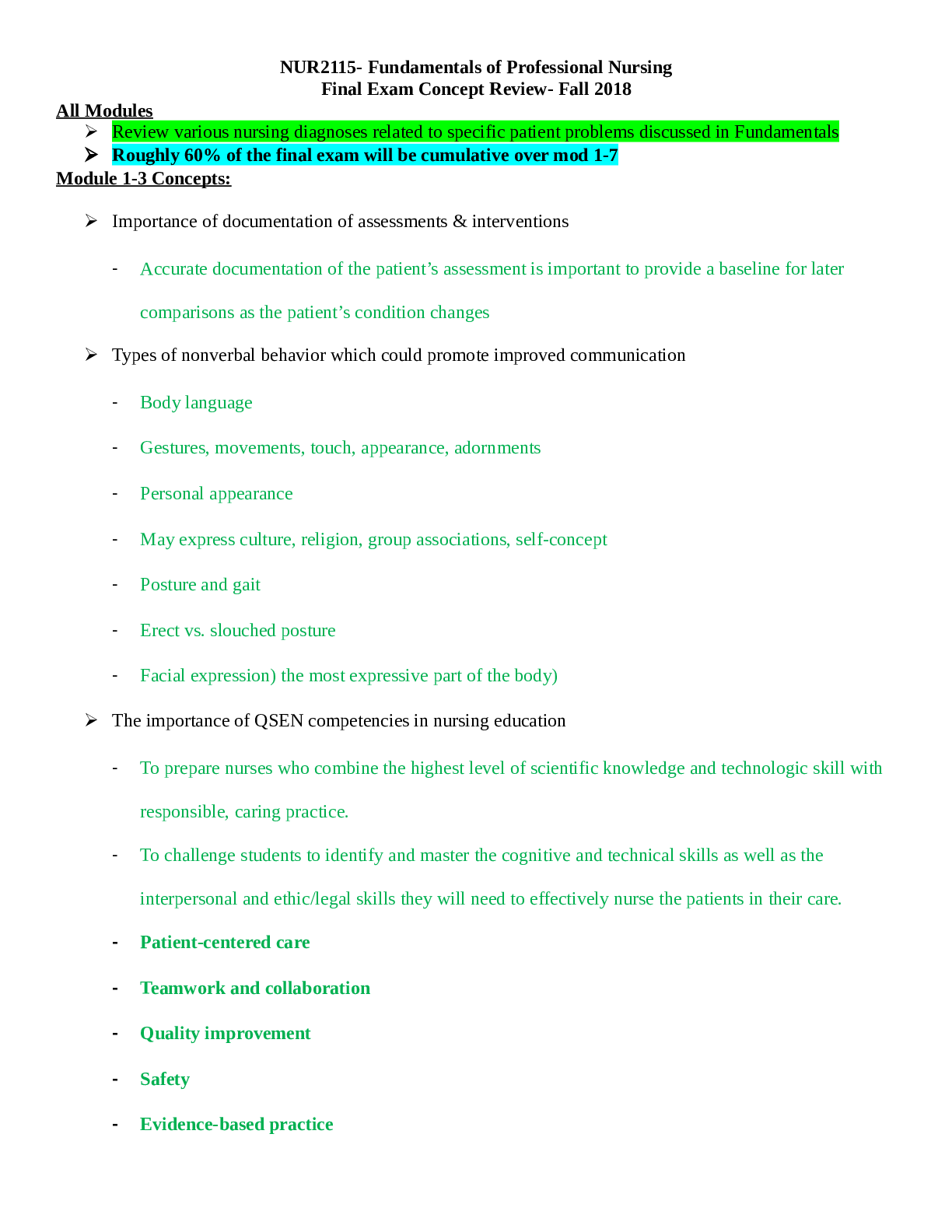Public Health > EXAM > Public Health Nursing Final Exam - Questions, Answers and Rationales (All)
Public Health Nursing Final Exam - Questions, Answers and Rationales
Document Content and Description Below
Public Health Nursing Final Exam - Questions, Answers and Rationales A public health nurse is working with a migrant farm worker who has experienced an exposure to a pesticide. When researching pest... icides, the nurse looks at the family of the chemical. What similarities are found among chemicals that have been placed in the same family? a. Route of entry into the body b. Actions and associated risks c. Effects that they have on the body d. Potency and toxicity Chemicals are grouped so it’s possible to understand the actions and risks associated with each group. A public health nurse is organizing a multidisciplinary team to address the issue of water pollution in the community. The most likely members that would be invited to address this issue would be: a. Physicians, water sanitation workers, and occupational therapists b. Pharmacologists, radiologists, and epidemiologists c. Nurse practitioners, pharmacologists, and environmentalists d. Geologists, meteorologists, and chemists Scientists who study how pollutants travel in air, water, and soil are geologists, meteorologists, and chemists. Which example contains the components necessary to form an epidemiologic triangle? a. Pesticides, water, food b. Lead, mercury, soil c. Trichloroethylene, water, infants d. Children under 12, elderly, temperature The epidemiologic triangle consists of an agent (chemical), host (community consisting of several variants), and environment (air, water, soil) An example of a point source of air pollution is: a. A smoke stack b. The number of cars and trucks c. How much fossil fuel is consumed in a community d. Ground ozone levels Point sources of pollution are identifiable sources of air pollution, such as a smoke stack. Which is considered a nonpoint source of pollution? a. Hazardous waste site b. Animal waste from wildlife c. Chlorine poured down a well d. Stagnant water Point source means a single place from which the pollutant is released into the environment, whereas nonpoint source implies a more diffuse source of pollution. If a nurse wanted more information on indoor air quality, which website would be most helpful? a. The National Institutes of Health (NIH) b. The American Lung Association c. Right to Know d. The Occupational Safety and Health Administration (OSHA) Sources of information about air quality include the Environmental Protection Agency (EPA) and the American Lung Association. A nurse is completing an exposure history using the mnemonic I PREPARE. What data would a nurse collect when asking questions about the first P? a. Present work b. Potential exposures c. Personal protective equipment use d. Problems with health Present work is the first P. A nurse fulfills the environmental health competency of assessment and referral when: a. Advocating for public policy changes b. Understanding policy framework and major pieces of legislation c. Completing an environmental health history d. Describing the scientific principles about environmental health Assessment is always an important element of the nursing process. The third option is an example of the assessment phase of the nursing process. The greatest single source of air pollution in the United States is from: a. Waste incineration b. Power plants c. Motor vehicles d. Molds Waste incineration and power plants are major contributors after motor vehicles. Molds contribute to poor indoor air quality. Which environmental law sets basic structure for regulating pollutants to United States waters? a. Safe Drinking Water Act b. Toxic Substance Control Act c. Clean Water Act d. Pollution Prevention Act The Clean Water Act sets basic structure for regulating pollutants to United States waters. Employees working with hazardous chemicals have the right to know about the chemicals they are working with through the creation of the: a. Material Safety Data Sheet b. Consumer Confidence Report c. Hazard Communication Standard d. Environmental Protection Agency This standard requires employers to maintain a list of all hazardous chemicals that are used on site. A nurse is addressing the problem of air pollution in the community. The first step in the process of controlling the pollution would be: a. Setting standards b. Monitoring c. Permitting d. Compliance Permitting is a process by which the government places limits on the amount of pollution emitted into the air or water. An acceptable level of emissions or a maximum contaminant level allowed is an example of which environmental protection strategy? a. Controlling pollution b. Waste minimization c. Land use planning d. Environmental standard An example of an environmental standard is an acceptable level of emissions or a maximum contaminant level allowed. An inspection of a facility after a permit is obtained for the purpose of observing whether the plans submitted in the permit application are being implemented as approved is an example of which environmental protection strategy? a. Controlling pollution b. Waste minimization c. Land use planning d. Environmental monitoring Environmental monitoring would be an inspection of a facility after a permit is obtained to observe whether the plans submitted in the permit application are being implemented as approved. Which question would a nurse ask during the first phase of a risk assessment? a. Has the chemical been released into the environment? b. How much and by which route of entry can the chemical enter the body? c. Is the chemical known to be associated with a negative health effect? d. What is the prediction for potential harm? The first phase is determining if a chemical is known to be associated with negative health effects (in animals or humans). What action can a nurse take on an individual level to reduce pollution in the environment? a. Provide a tax incentive to factories that do not pollute. b. Make laws related to allowed levels of pollution in the area. c. Choose a less-polluting car. d. Move to an area with less pollution. Citizens can reduce air pollution by doing their part, which can include choosing less-polluting cars. When would it be appropriate for a nurse to use a Geographic Information System (GIS)? a. Recording client data collected at a foot clinic b. Determining neighborhoods that have an increased incidence of lead poisoning c. Evaluating effectiveness of a farm safety program d. Scheduling health promotion programs in the community The use of a Geographic Information System (GIS) allows the public health nurse to apply the principles of epidemiology into practice. GIS allows nurses to code data so that it is related spatially to a place on earth and is helpful in determining concentrated areas for incidence of disease and illness. Which approach(s) can a nurse use when assessing environmental health risks? Select all that apply. a. Ask legislators to provide a list of environmental pollutants in the area. b. Develop a list of exposures associated with urban, rural, or suburban settings. c. Assess the risk by medium such as air, water, soil, or food. d. Divide the environment into functional locations: home, school, workplace, and community. The 2nd, 3rd, and 4th options are ways a nurse can assess the environment. A public health nurse working with a family living in poverty recognizes that they are more likely to be exposed to environmental hazards because they have (select all that apply): a. Limited funds to pay for health care b. Poor nutrition c. Homes located closer to hazardous waste sites d. Less education Families living in poverty are more likely to experience environmental justice issues such as disproportionate environmental exposures. Sub-standard housing, living closer to hazardous waste sites, working in more hazardous jobs, poorer nutrition, and less access to quality health care all contribute to this issue. Although limited education is related to poverty, it is not discussed as causing an increase in environmental exposure. When caring for a client with methicillin-resistant S. aureus (MRSA), the community health nurse should know: a. Persons with MRSA usually have a chronic illness. b. MRSA is a hospital-acquired infection and not often seen in the community. c. VRE (vancomycin-resistant Staphylococcus aureus) follows MRSA. d. MRSA is becoming more common in the community. MRSA is being seen more and more in the community with outbreaks frequently associated with school athletic programs and prison populations. The time interval between invasion by an infectious agent and the first appearance of signs and symptoms of the disease is called: a. Communicable period b. Incubation period c. Infectiousness d. Pathologic reaction The incubation period is the time interval between invasion by an infectious agent and the first appearance of signs and symptoms. The ability of an agent to produce a severe pathologic reaction is known as: a. Antigenicity b. Invasiveness c. Toxicity d. Virulence Immunity is a characteristic of the: a. Agent factor b. Host factor c. Environmental factor d. Epidemiologic triad Immunity refers to species-determined resistance to an infectious agent. The nurse teaches food handlers to wash utensils after contact with raw meat. This prevention focuses on the: a. Agent b. Host c. Environment d. Food handler Teaching food handlers to wash utensils after contact with raw meat is a prevention that focuses on the environment. An example of an agent is: a. Host resistance b. Virus c. Infectiousness d. Bug bite [Show More]
Last updated: 3 months ago
Preview 1 out of 134 pages
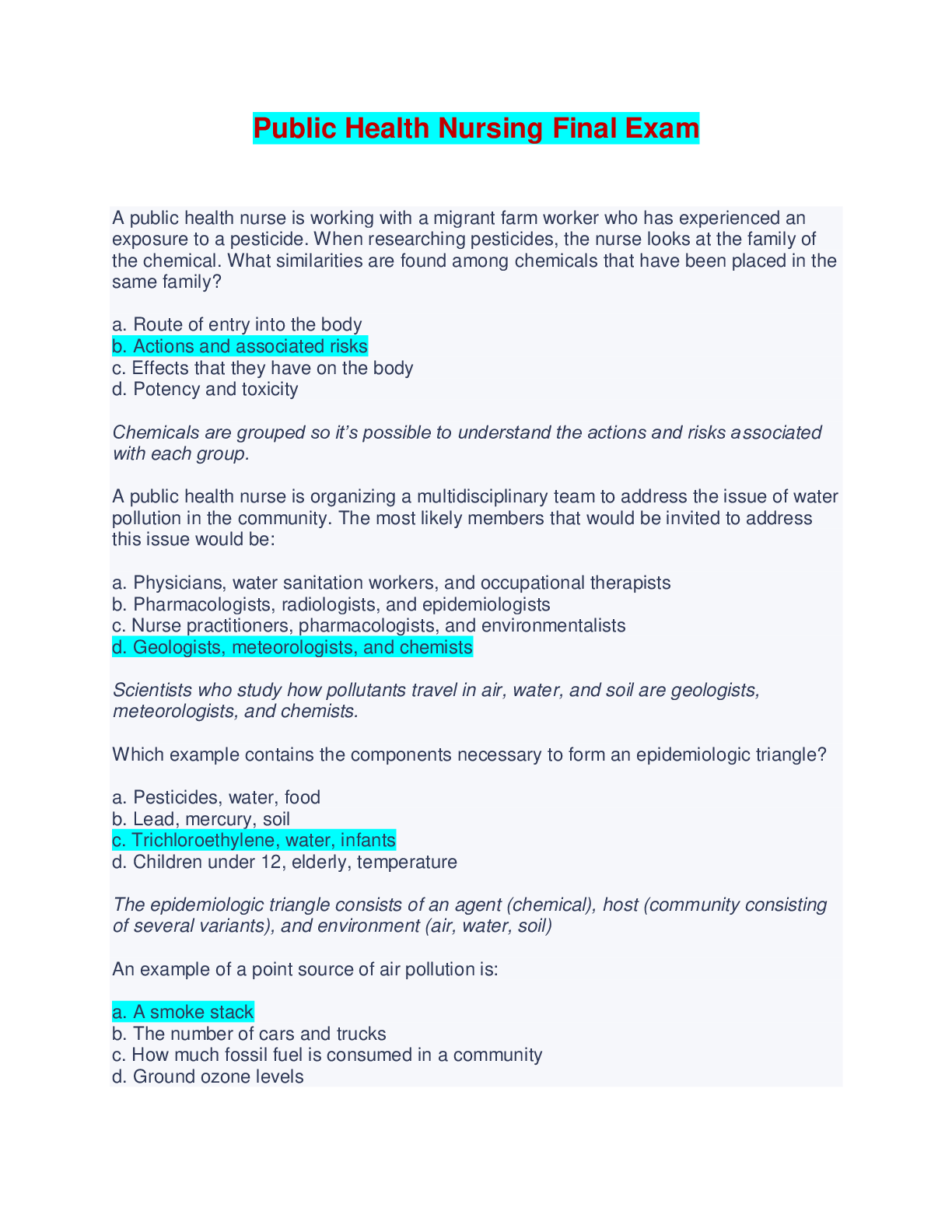
Reviews( 0 )
Document information
Connected school, study & course
About the document
Uploaded On
Jan 25, 2024
Number of pages
134
Written in
Additional information
This document has been written for:
Uploaded
Jan 25, 2024
Downloads
0
Views
25



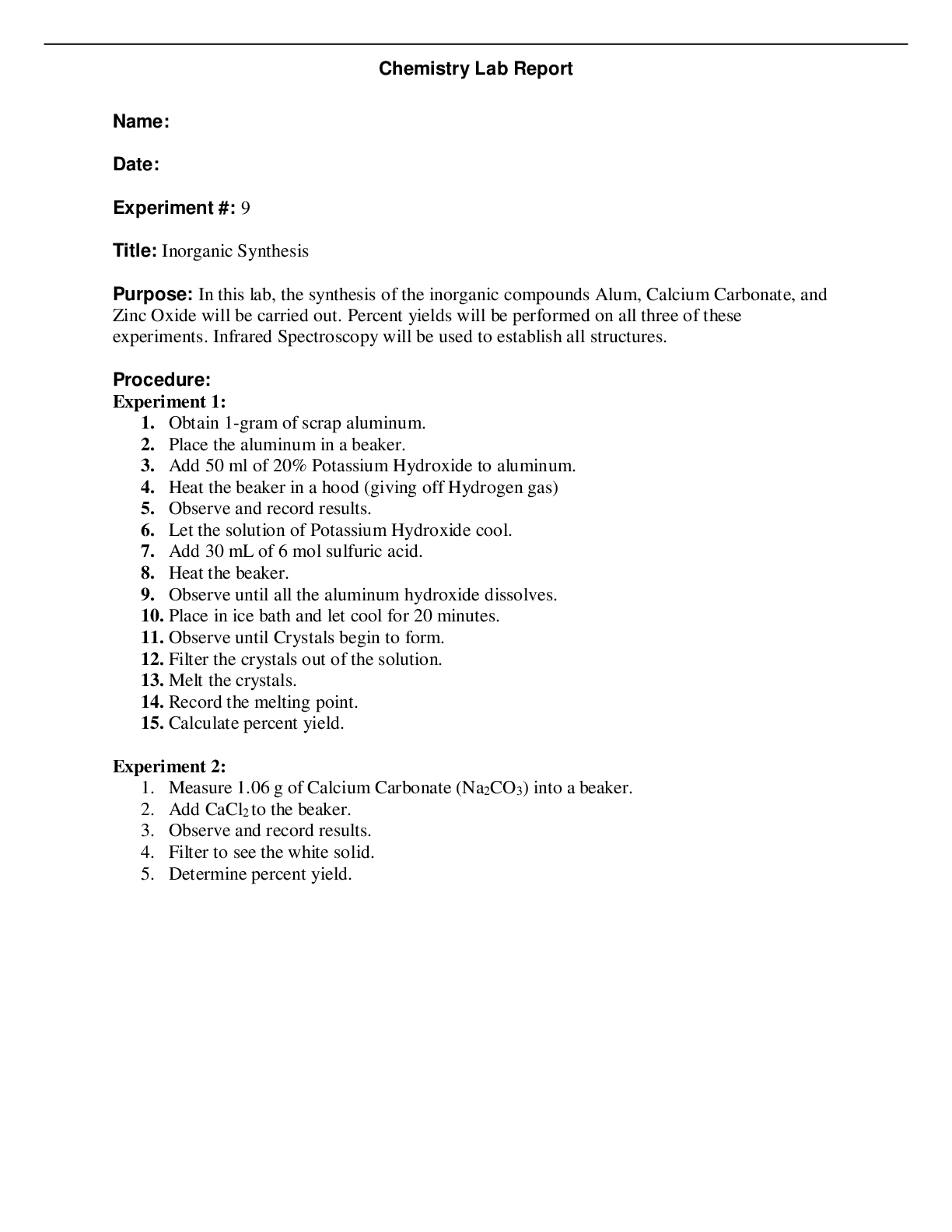
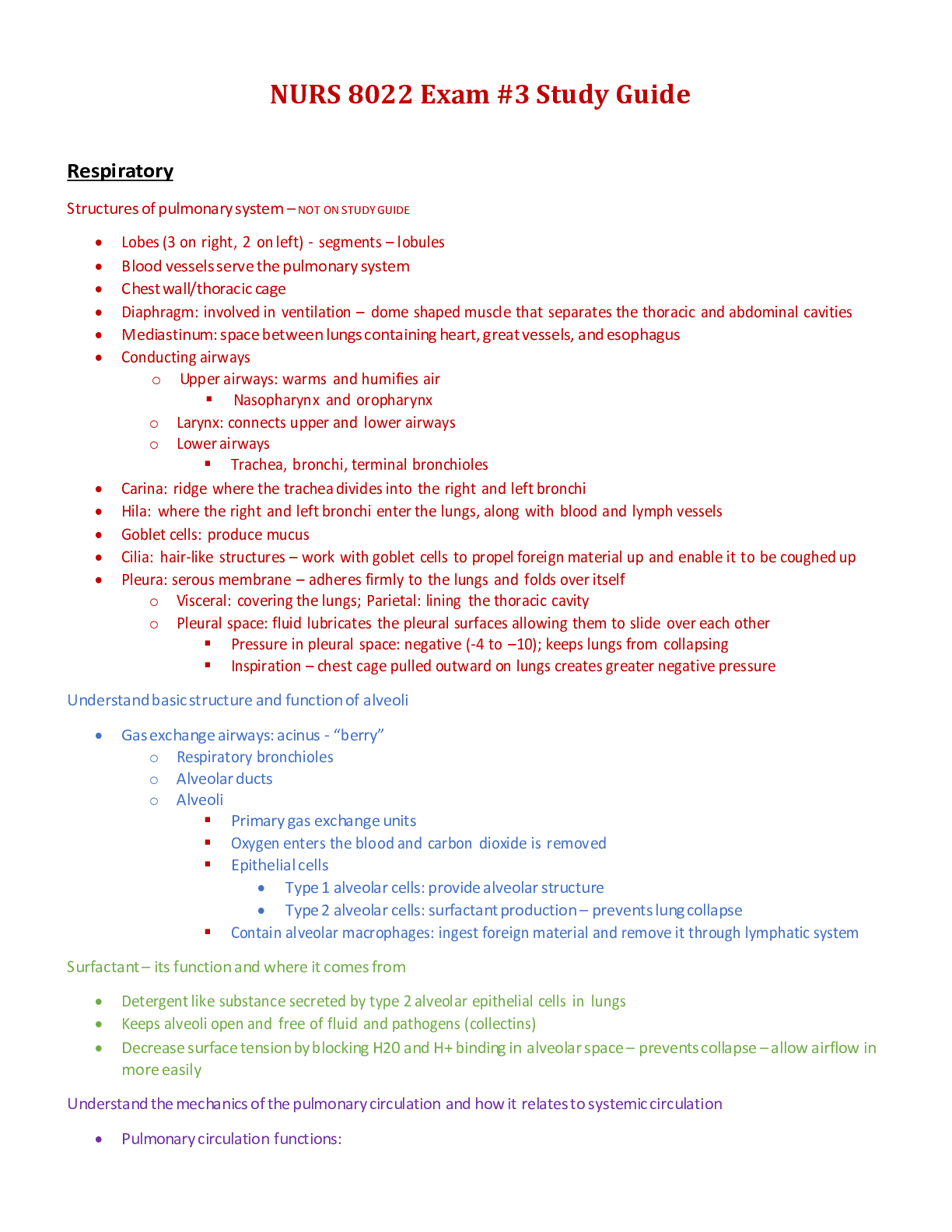


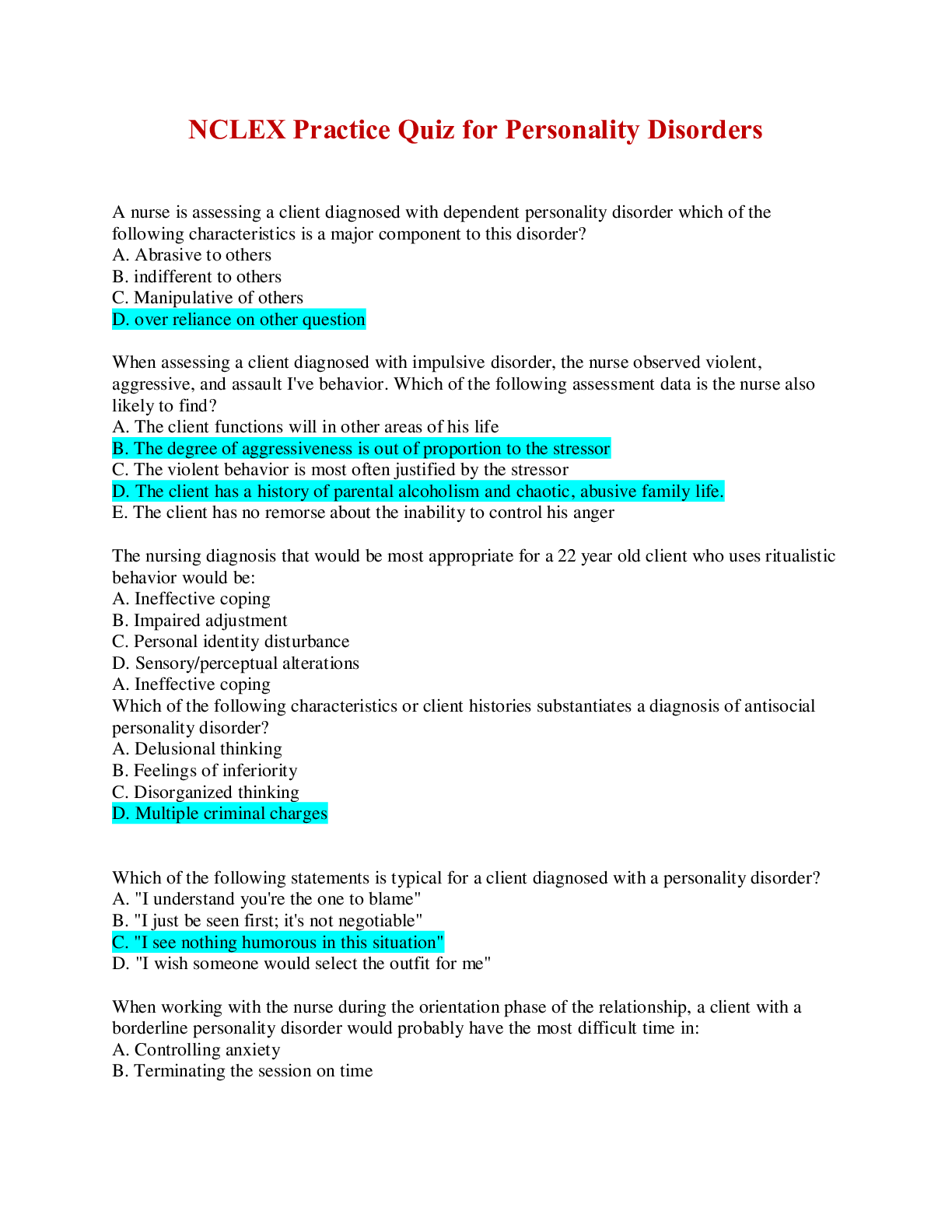



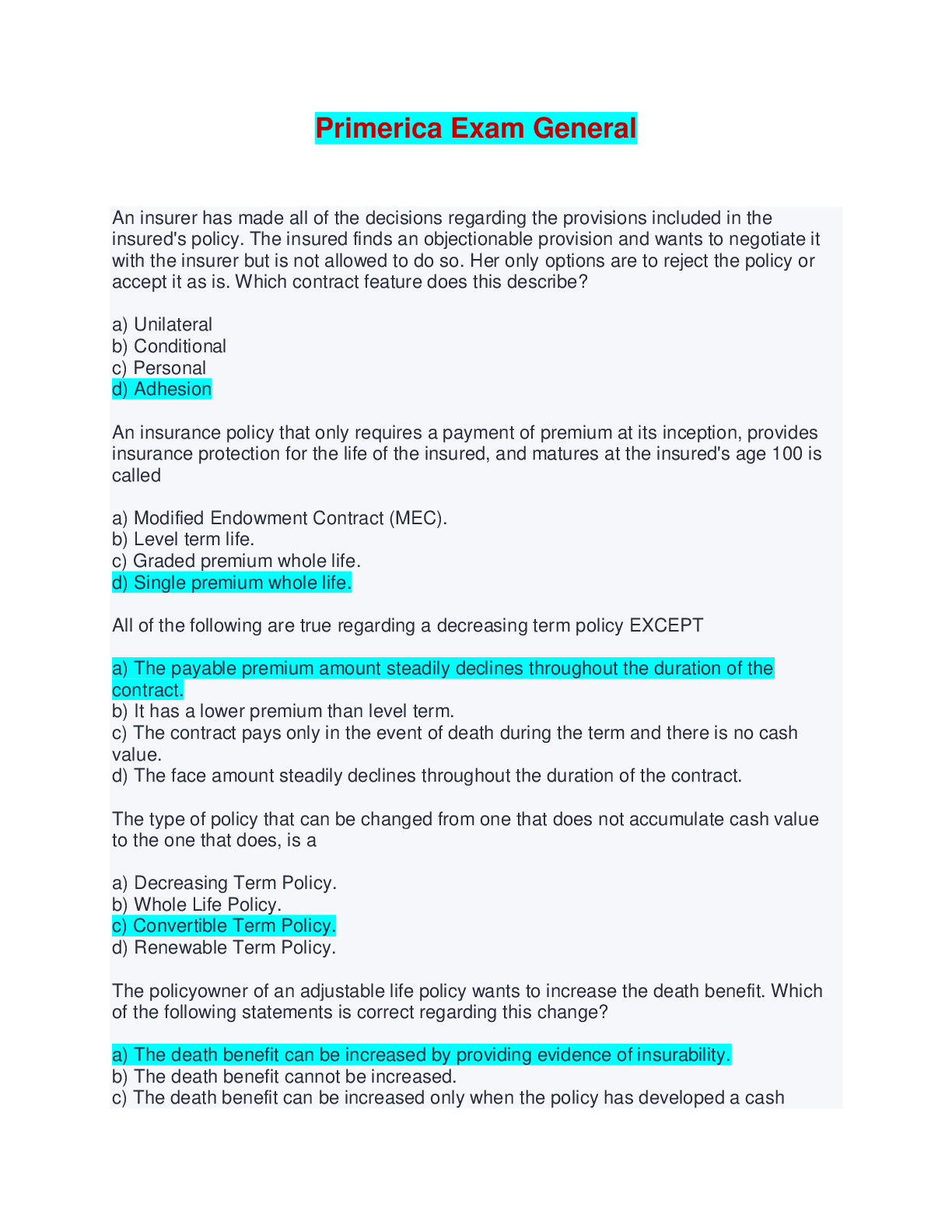

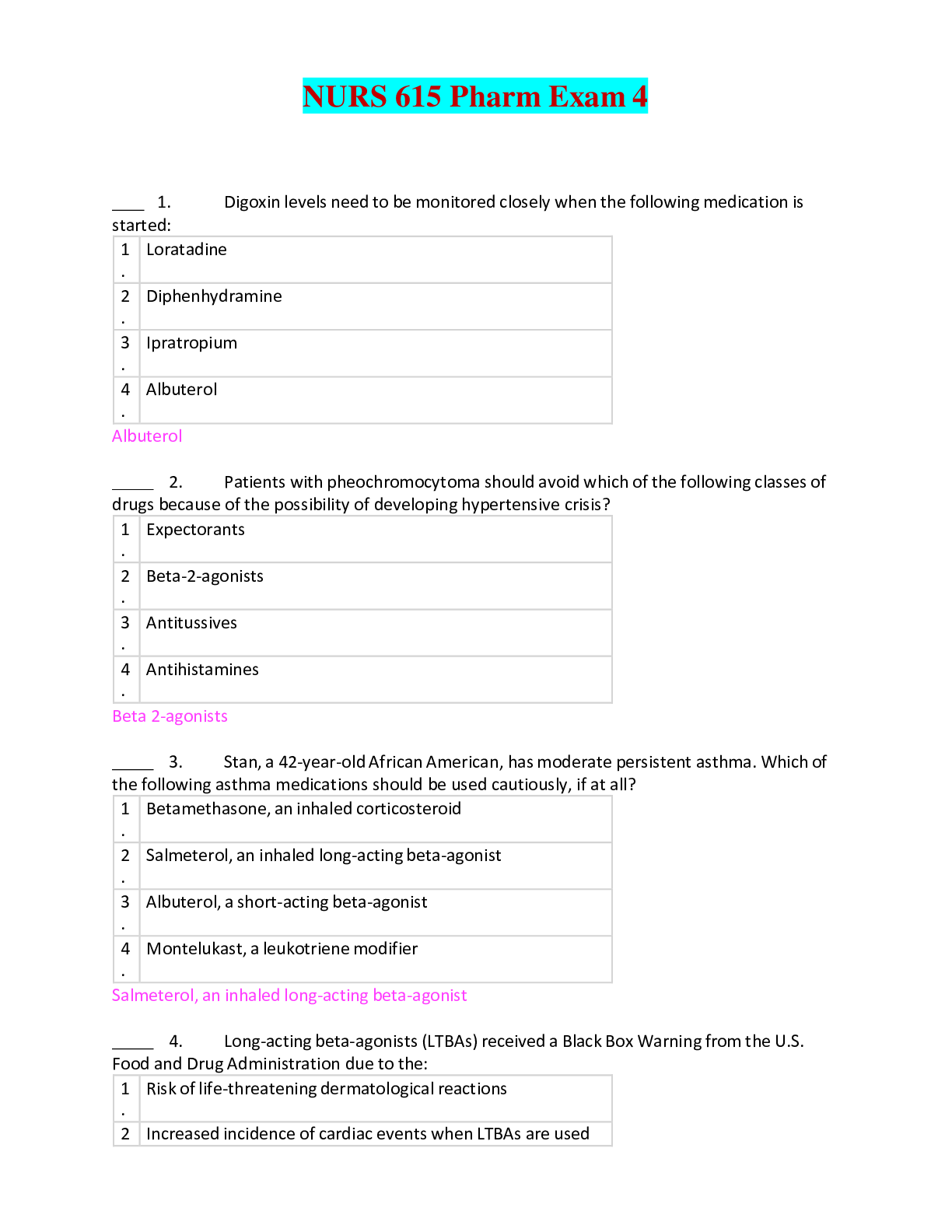
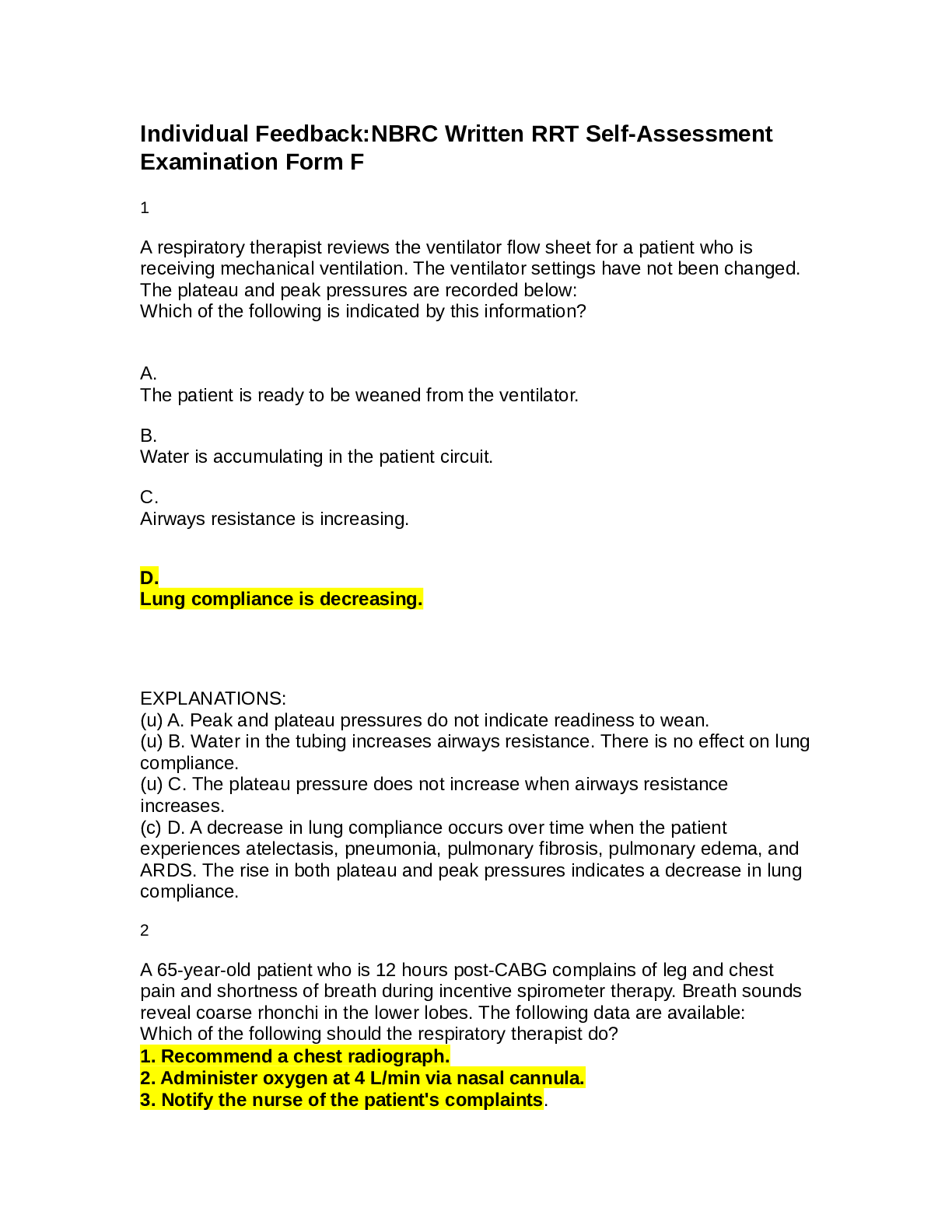
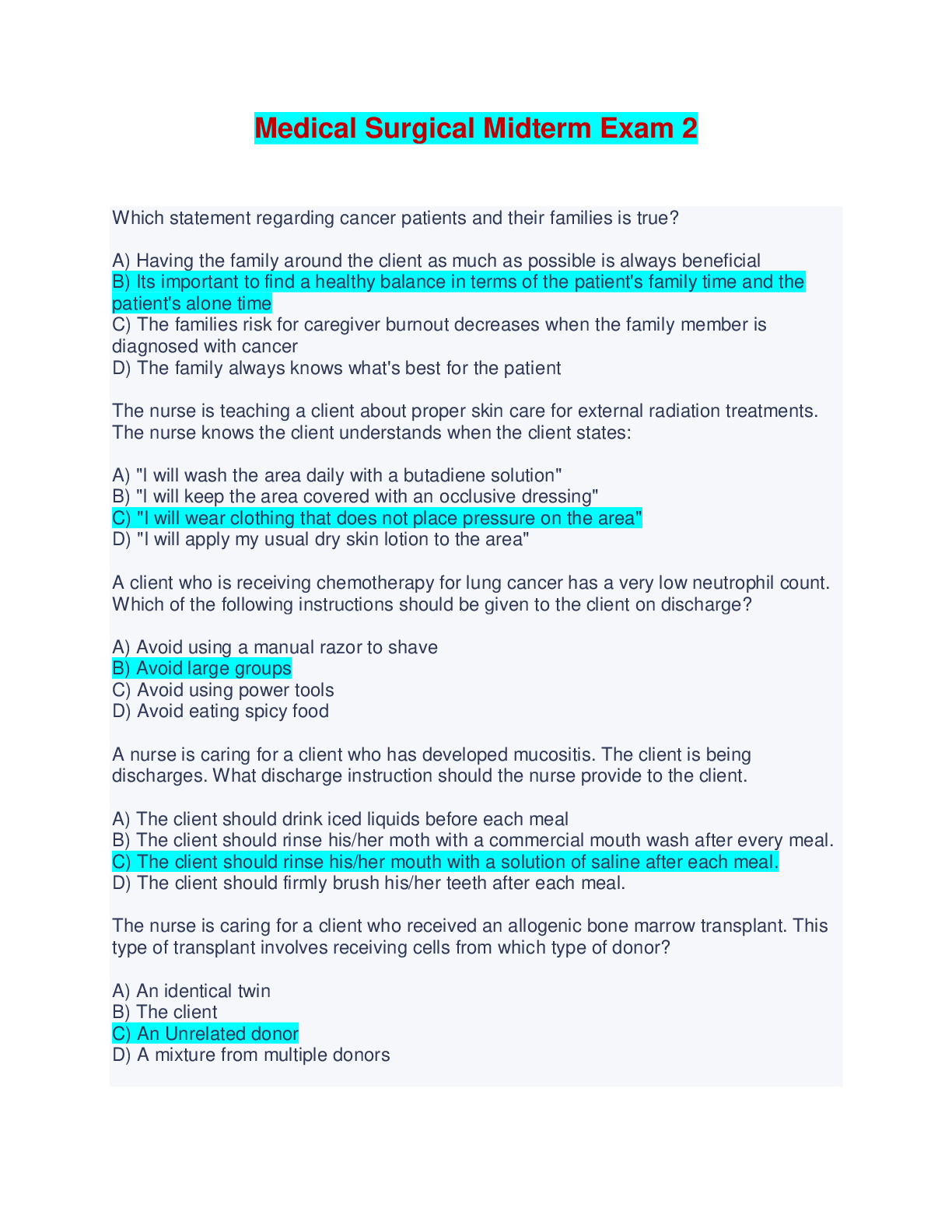
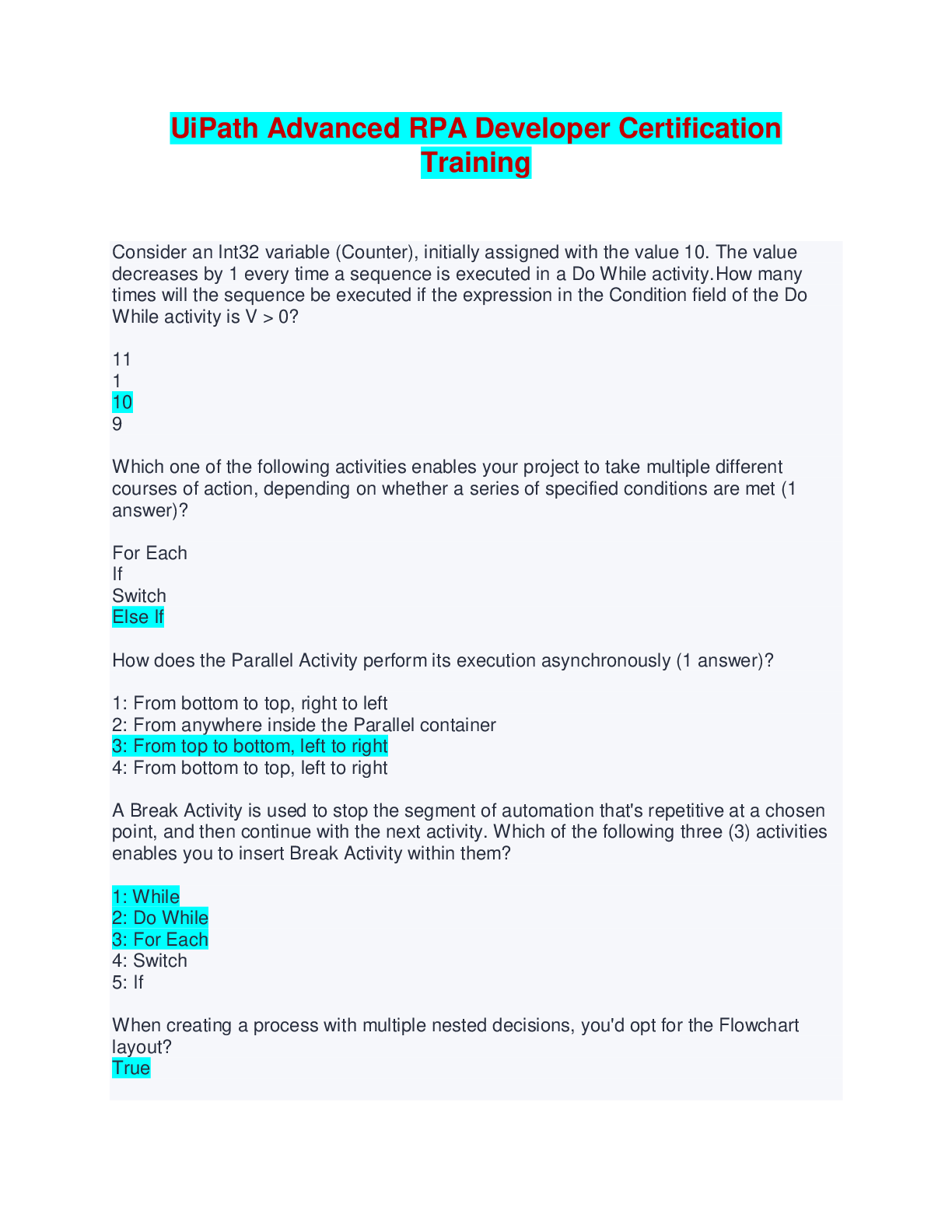
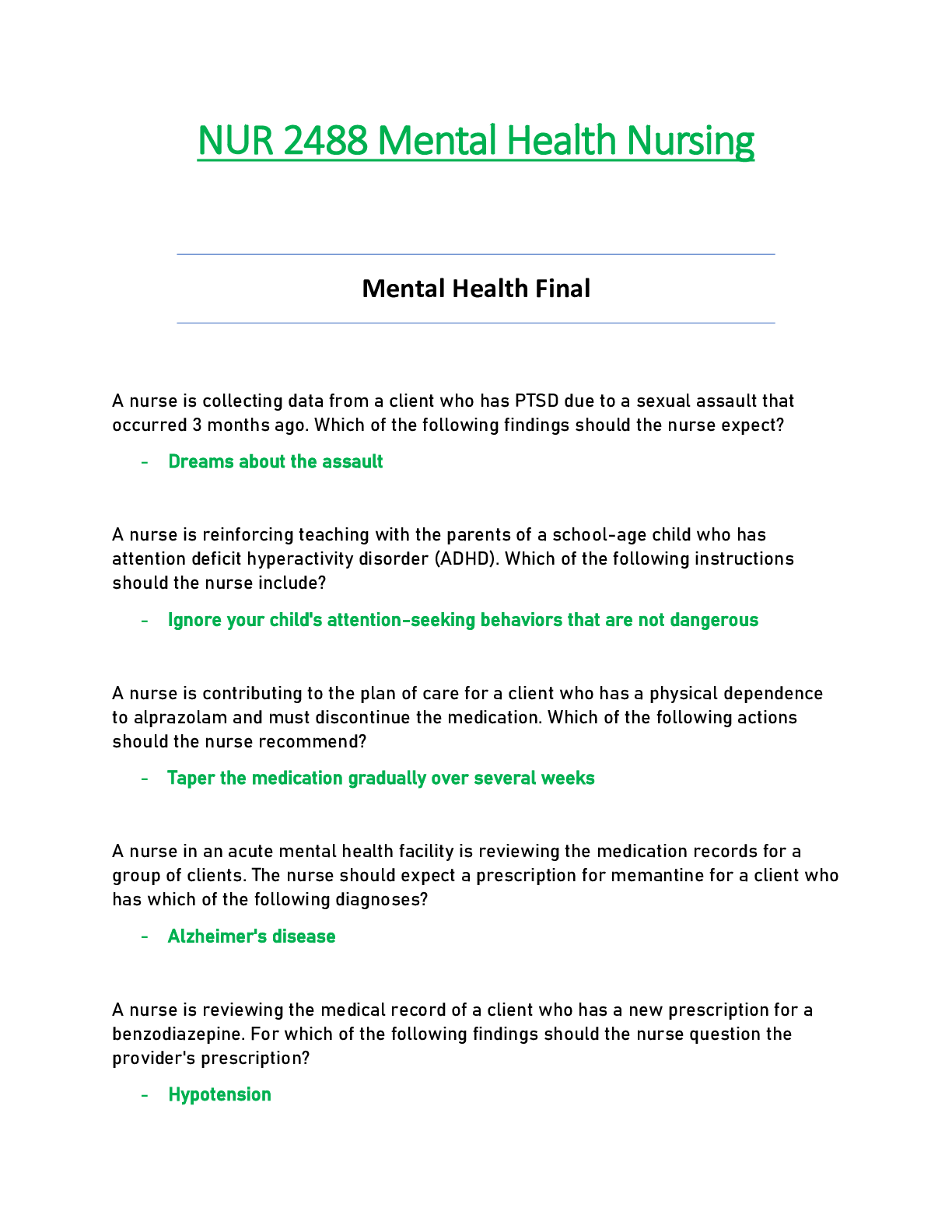
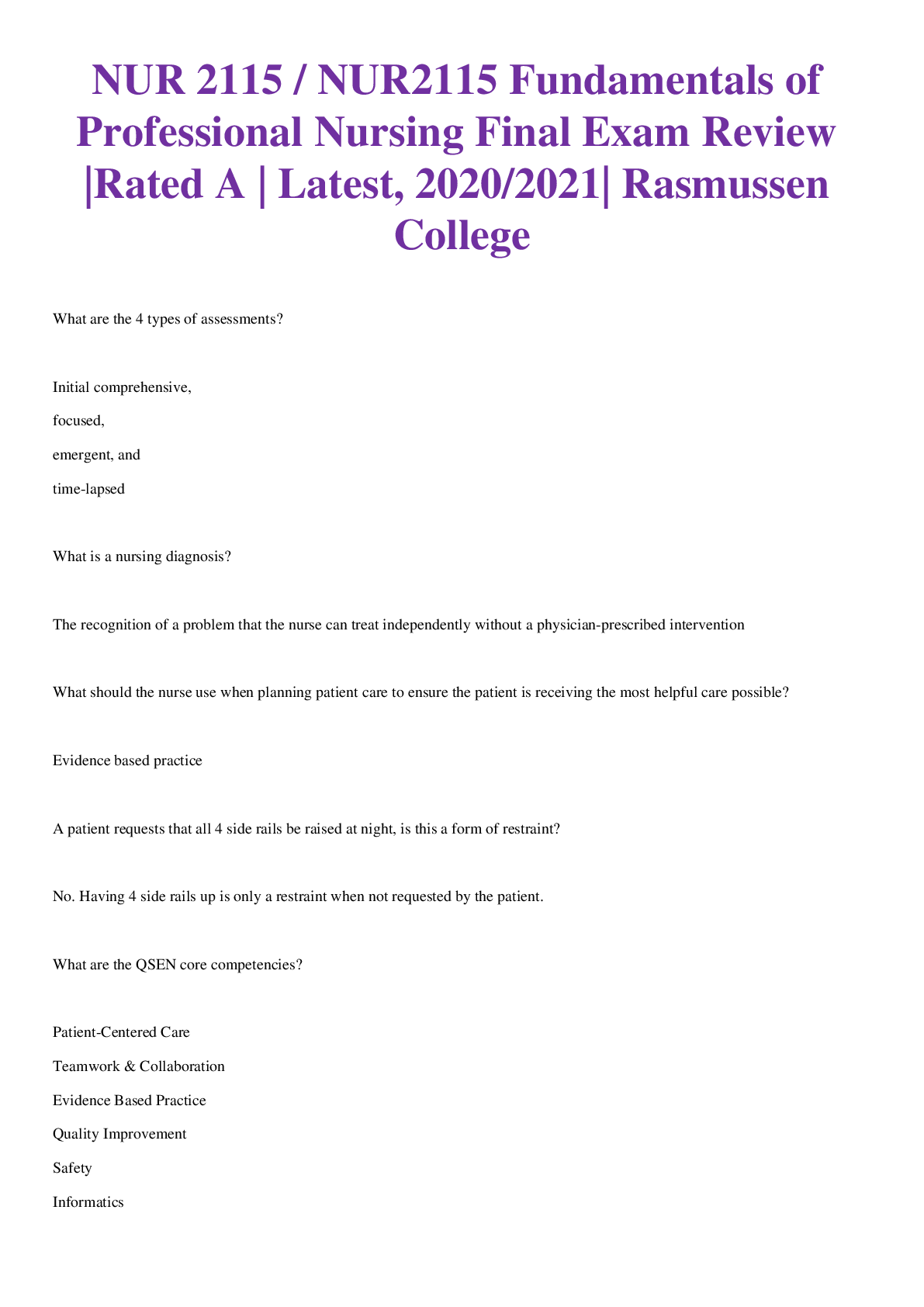
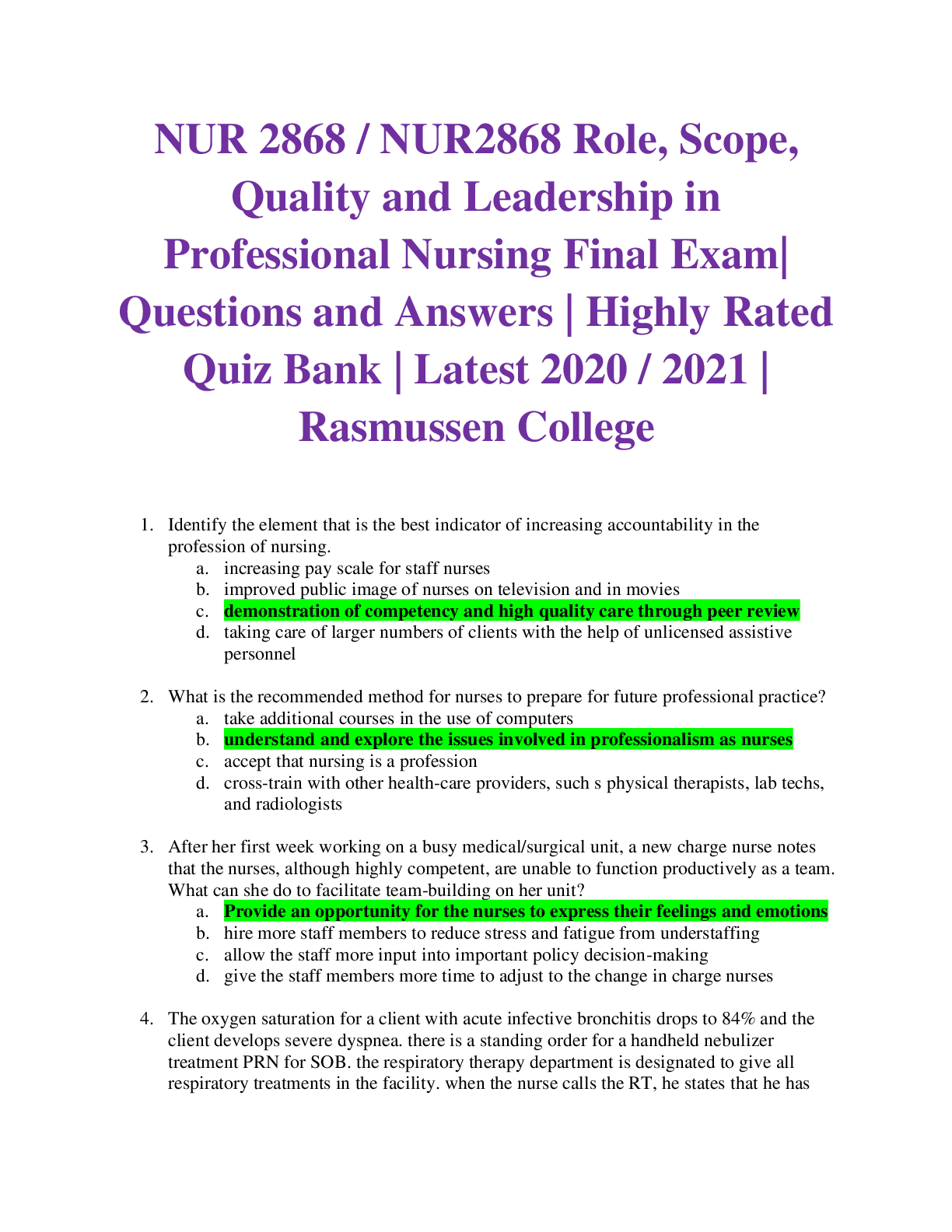

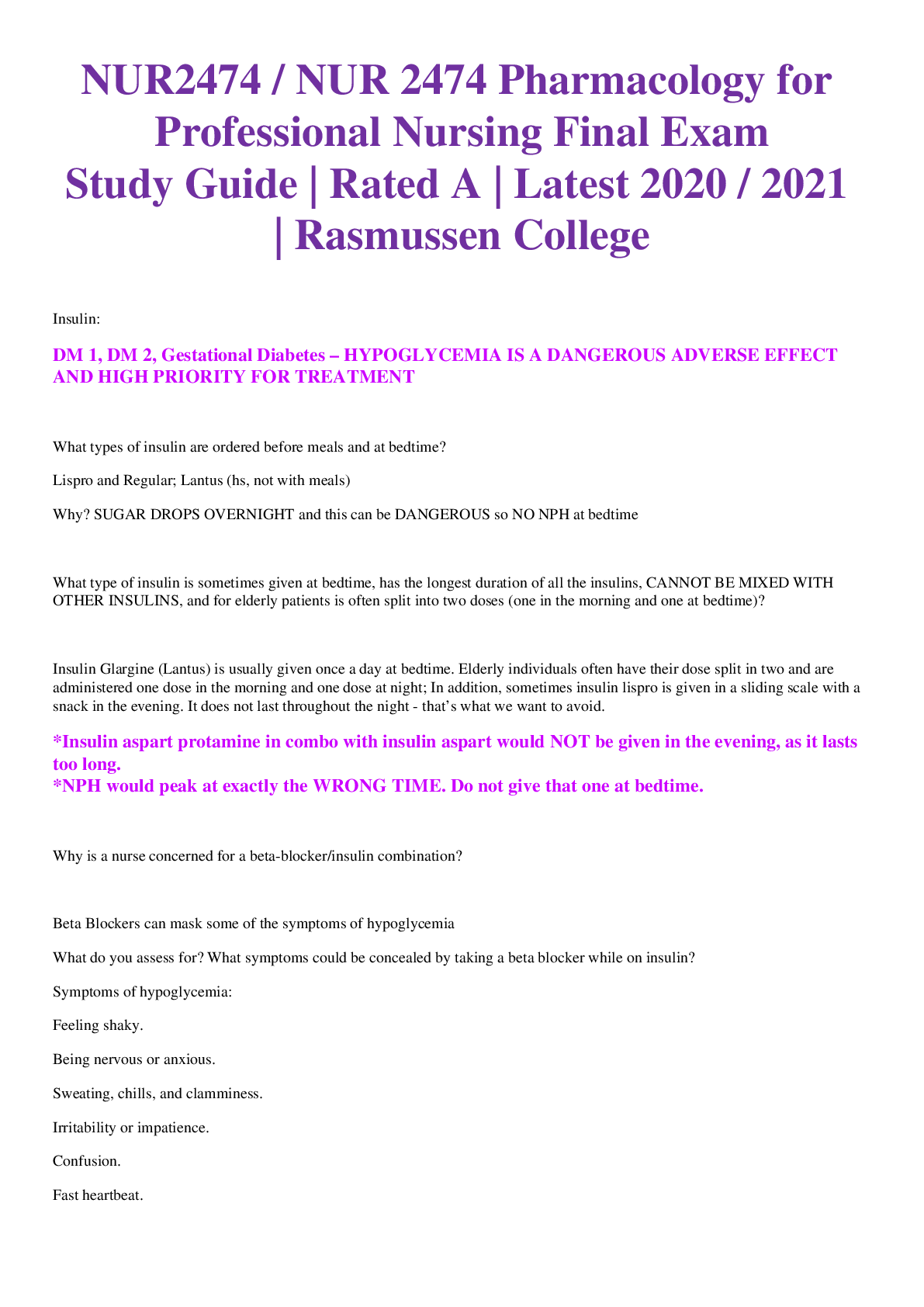

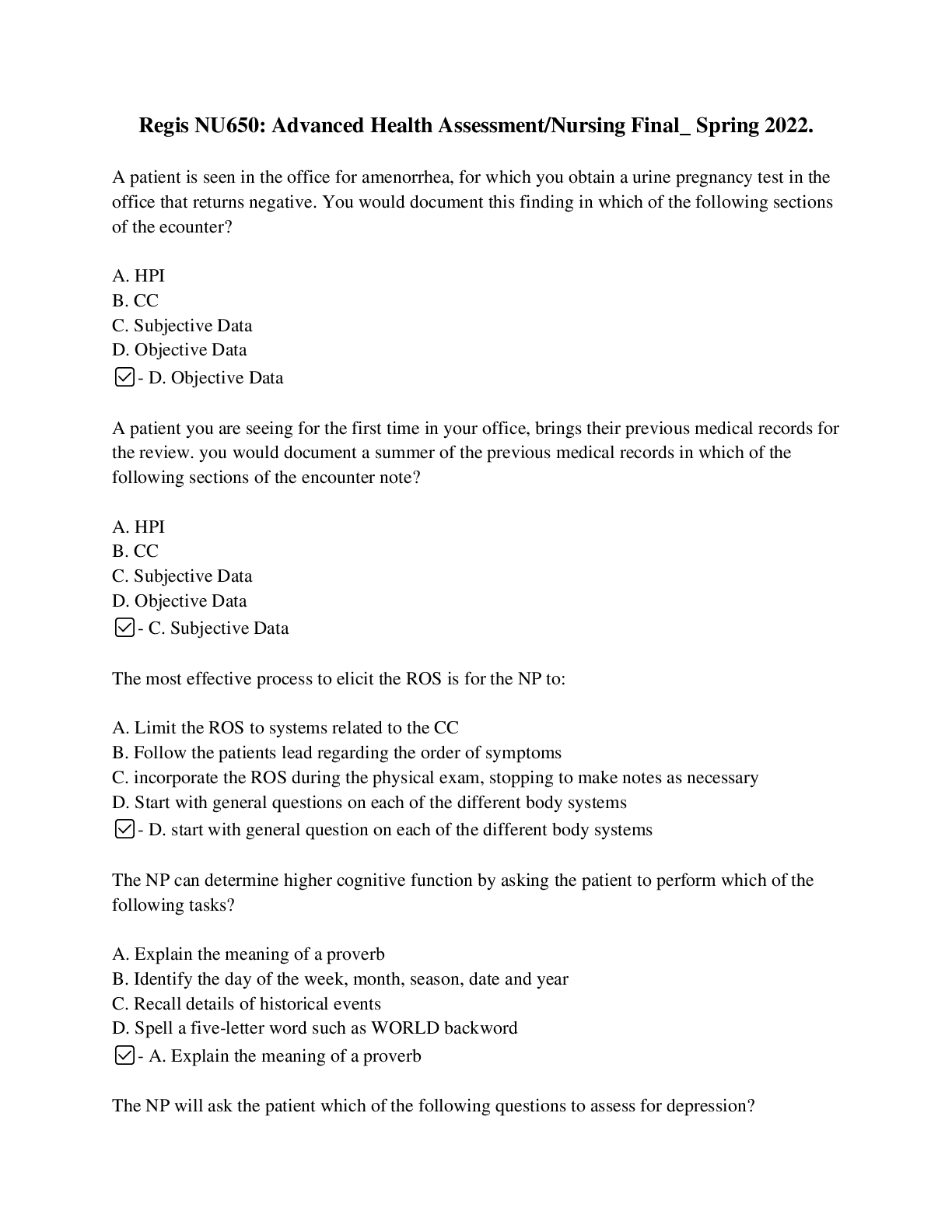
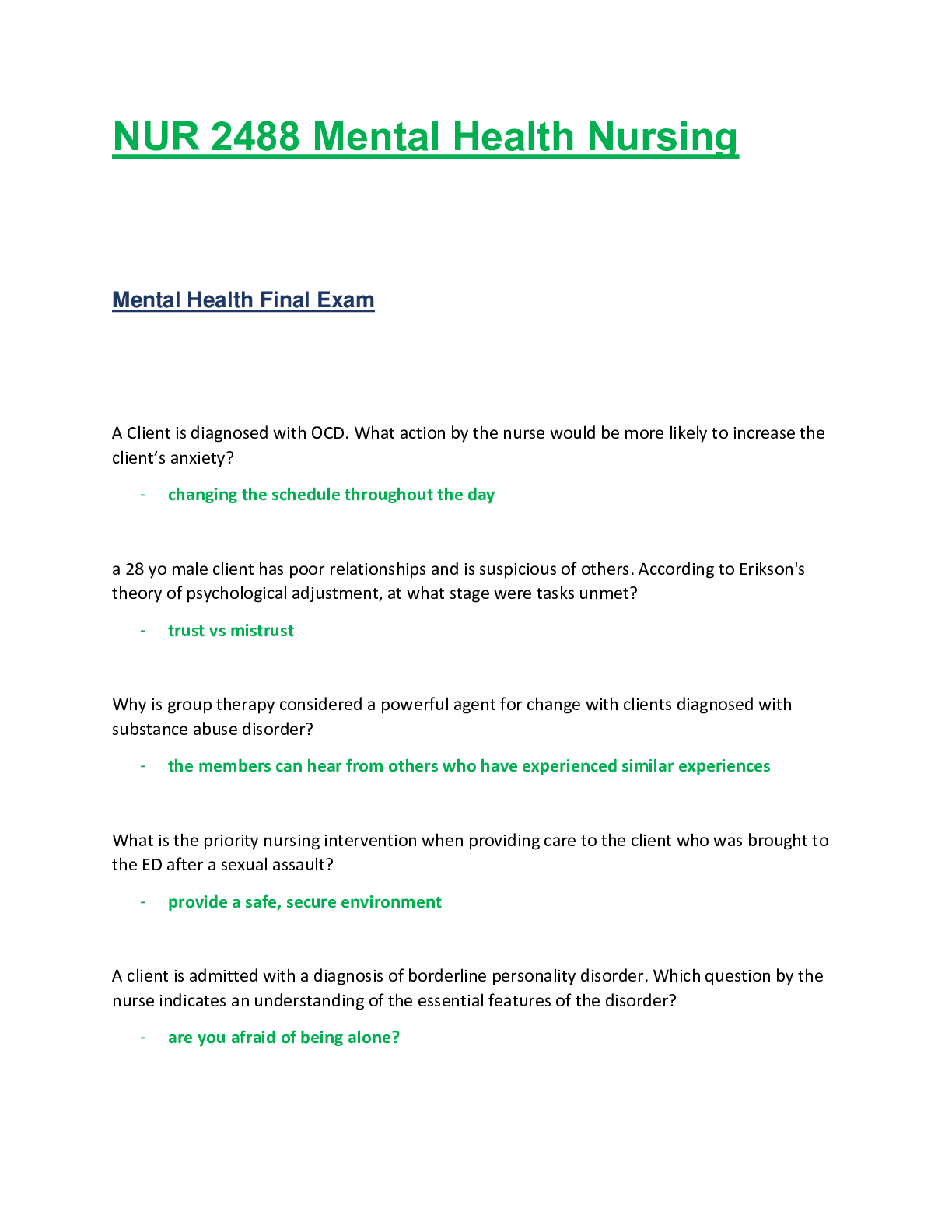
 F21.png)
